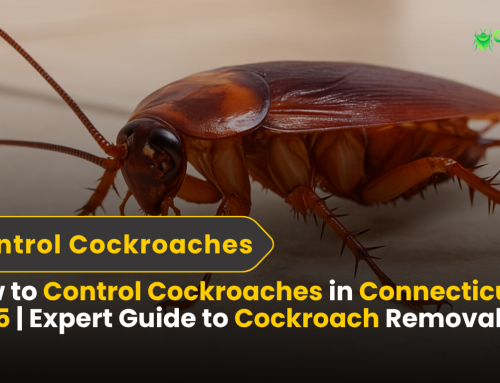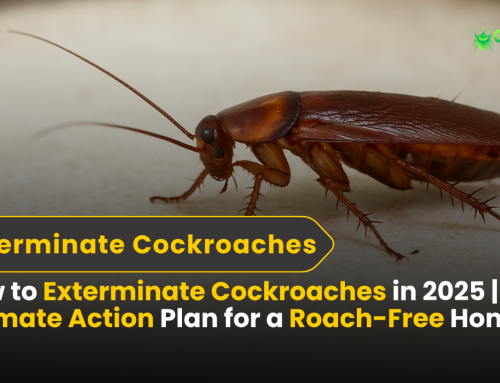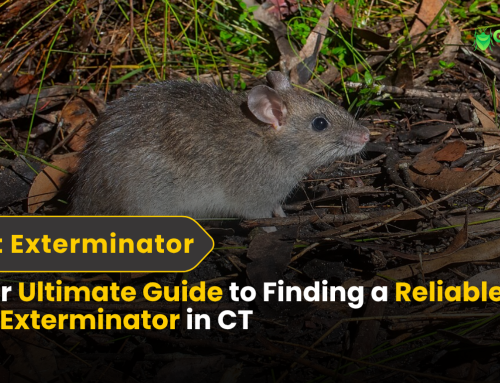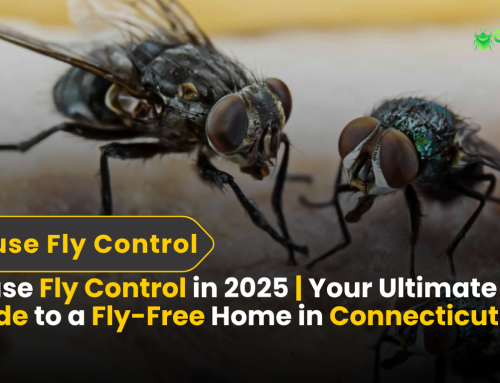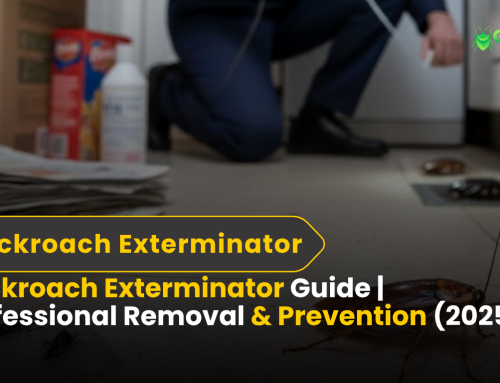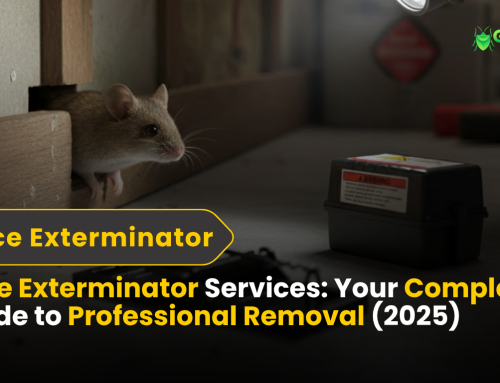Say Goodbye to Yellow Jackets: 7 Expert Extermination Tips
Aggressive wasps called yellow jackets are frequently misidentified as bees. Yellow jackets have many stinging abilities, in contrast to bees that only have one. This puts them at great risk, especially to individuals who are sting-allergic. Thousands of wasps can live in their nests, and as their colony expands, they become more hostile. Effective management of yellow jackets begins with an understanding of their behaviour and nesting practices. They are scavengers who are drawn to food and sweet beverages, which is why picnics and outdoor get-togethers are common places to find them.
Identifying The Yellow Jacket Nests In Connecticut
Nests are constructed by yellow jackets in a variety of places, frequently inaccessible and concealed. Common locations include attics, wall spaces, dense shrubbery, and underground burrows. Finding the nest’s location is essential to a successful elimination. Yellow jacket activity increases in late summer and early autumn, when wasp activity may be more noticeable near your house. Keep an eye out for any increased activity in the vicinity of any suspected nest sites. It’s important to proceed with caution when identifying the wasps because upsetting their nest may result in an aggressive reaction.
Protecting Yourself From Yellow Jacket Nests
Be sure to have enough protection before attempting any elimination. Put on heavy clothes that covers your whole body, such as long sleeves, slacks and gloves. You can shield your face and neck with a hat that has a net or a bee veil. In the event that the yellow jackets turn hostile, plan a way out. It is strongly advised that you get expert assistance right away if you are allergic to stings and avoid performing the extermination procedure yourself. It’s also a good idea to keep an epinephrine injector nearby if you have a known allergy.
Tackling the Problem On Your Own
Several do-it-yourself techniques can effectively help those who prefer a hands-on approach to controlling yellow jackets. Here are some common methods:
-
Insecticidal Dusts or Sprays:
- Use insecticides specifically designed for wasps.
- Apply the treatment directly to the nest entrance in the evening when yellow jackets are less active.
- Always follow the manufacturer’s instructions for safe and effective use.
-
Yellow Jacket Traps:
- Place traps throughout your property to reduce their population.
- These traps use bait to lure yellow jackets inside, preventing them from escaping.
- Regularly check and replace the traps to maintain effectiveness.
-
Soap and Water Solution:
- A mixture of water and dish soap can be sprayed directly on the nest to suffocate yellow jackets.
- This method is best for small nests and should be done cautiously.
-
Sealing Entry Points:
- Identify and seal potential nesting sites around your home.
- Preventing access to small holes and crevices can reduce infestations
Professional Yellow Jacket Extermination Services In Connecticut
Although do-it-yourself techniques can work just fine in some cases, there are situations when hiring a pro to remove yellow jackets is essential. Professionals possess the necessary skills and equipment to properly tackle large infestations or nests located in hazardous or difficult-to-reach areas. They can also offer long-term fixes to stop infections in the future. Knowing that the issue is being handled by professionals who can guarantee the full elimination of yellow jackets from your property gives you piece of mind.
Eco-Friendly Extermination Options Available
There are environmentally friendly eradication methods accessible for those who care about the environment. Certain professional services use environentally friendly pest control techniques that reduce damage to beneficial insects and the surrounding area. Using natural predators, like specific birds or insects, to manage the yellow jacket population is one of these strategies. Furthermore, organic pesticides with a short half-life and little environmental impact may work well. Choosing environmentally appropriate solutions to your yellow jacket issue helps preserve the ecological balance.
1. Preventative Measures
When it comes to pest management, prevention is always preferable to treatment. Sealing off any gaps or breaches in the outside of your house might help deter yellow jackets from entering. Keep an eye out for early indications of nests on your property and take quick action to eradicate them before they cause more damage. Tightly seal trash cans, and stay away from leaving food or sugary drinks outside—these items draw the attention of yellow jackets. Wasps can also be deterred from entering your home by planting flowers and herbs like eucalyptus or mint.
2. Recognizing the Signs
When it comes to handling yellow jackets responsibly, knowing when to seek expert assistance is essential. It’s time to get professional help if you see several nests, yellow jacket symptoms within your house, or if the infestation doesn’t go away despite your best attempts. Expert exterminators are able to evaluate the issue, apply focused treatments, and guarantee that all yellow jackets are completely removed from your property. They can also provide guidance on keeping your house free of yellow jacket infestations and preventing future ones.
3. The Extermination Process
Hiring Yellow Jacket Extermination Services usually entails a number of processes. To find every nest and determine the full degree of the infestation, the exterminator will first perform a comprehensive inspection. They will create a treatment plan that is customised to your unique circumstances based on their results. This strategy calls for getting rid of the yellow jackets by utilising insecticides, traps, or other techniques. Following the treatment, the exterminator will keep an eye on the area to make sure any yellow jackets have been eliminated and will make suggestions for avoiding infestations in the future.
4. Long-Term Strategies
It’s crucial to put long-term plans in place after a successful elimination to prevent yellow jackets from coming back. In order to make sure your house is free of yellow jackets, routine upkeep and inspections are essential. Eliminate any food sources and seal any possible access points that can draw yellow jackets. To keep an eye out for any indications of yellow jacket activity, think about arranging for a pest control expert to visit on a regular basis. You may have a secure, pleasant atmosphere free from the concern of yellow jacket infestations by being watchful and proactive.
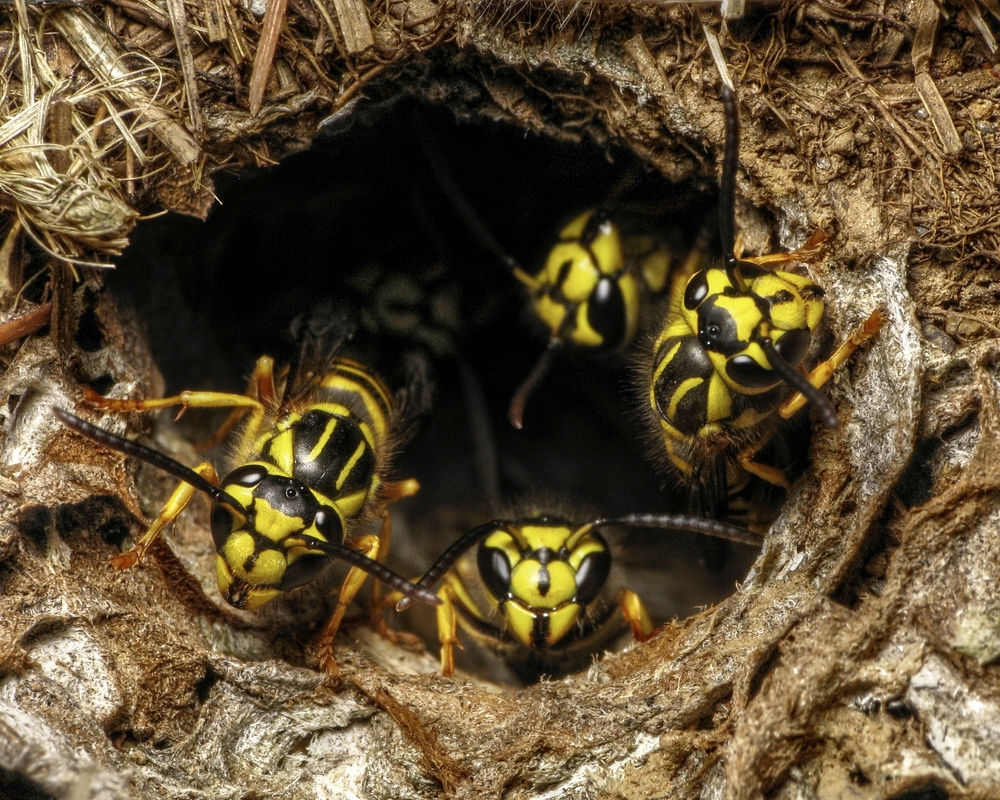
FAQ’s
- How can I identify a yellow jacket nest?
- Yellow jacket nests are often found in hidden locations such as underground burrows, wall voids, attics, and dense shrubbery. Look for increased yellow jacket activity around specific areas of your yard or home, especially during late summer and early fall.
- What should I wear when attempting to exterminate yellow jackets myself?
- Wear protective clothing that covers your entire body, including gloves, long sleeves, pants, and a bee veil or hat with a net to protect your face and neck. This helps prevent stings and ensures your safety.
- When is the best time to apply insecticidal treatments to a yellow jacket nest?
- The best time to apply insecticidal treatments is during the evening when yellow jackets are less active. This reduces the risk of being stung and increases the effectiveness of the treatment.
- What are the benefits of hiring professional Yellow Jacket Extermination Services?
- Professional extermination services have the experience, equipment, and knowledge to safely and effectively remove yellow jacket nests. They can handle extensive infestations and provide long-term solutions to prevent future problems.
- Are there eco-friendly options for yellow jacket extermination?
- Yes, there are eco-friendly options available, such as using natural predators or organic insecticides. Some professional services offer green pest control methods that minimize harm to beneficial insects and the environment.
- What preventative measures can I take to keep yellow jackets away?
- Seal cracks and openings in your home’s exterior, keep garbage cans tightly sealed, avoid leaving food or sugary drinks outside, and plant herbs and flowers that repel wasps, such as mint or eucalyptus.
- When should I seek professional help for a yellow jacket infestation?
- Seek professional help if you notice multiple nests, signs of yellow jackets inside your home, or if the infestation persists despite your efforts. Professional exterminators can provide targeted treatments and ensure complete removal.

